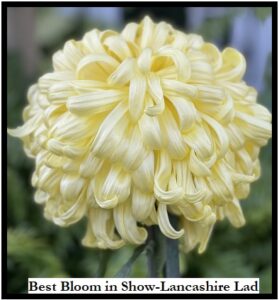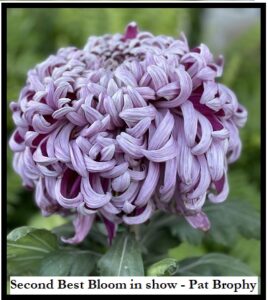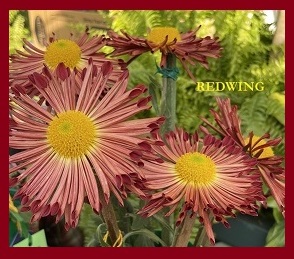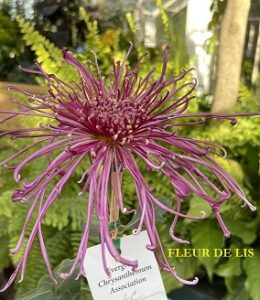ANNUAL GARDEN TOUR AND POT LUCK PICNIC
AUGUST 8TH, 2009
2009 GARDEN TOUR – The annual ECA garden tour and Picnic is scheduled for Saturday, August 8th. The 2009 garden tour will be in the South end and will finish with a picnic at Rich Pozniak’s home in North Bend, WA . Picnic is Pot Luck and at the July meeting, there was a sign up sheet provided. Club members can still sign up and attend..
TELEPHONE COMMITTEE MEMBERS call your lists early as your calls do help to increase attendance. Please ask if they are attending the garden tour and pot luck picnic and confirm what they will bring and give a count of members attending and dishes they will bring to Steve Backstrom.
For those going on the garden tour, we will meet at Valley Ridge Park on 188th and 46th Ave. South, next to Tyee High School. The tour Caravan will be leaving at 9:30am sharp. Scheduled stops for the tour include the homes of Bob and Marylou Ewing, Don and Jane Stark and then on to Rich and Julie Posniak’s home for a tour and picnic. Tour order and maps for the tour destinations will be provided at the meeting place, Valley Ridge Park on 188th and 46th Ave. South. The tour will proceed as a caravan from there. Carpooling is encouraged. Following is a list of the addresses for the scheduled stops.
Valley Ridge Park on 188th and 46th Ave. South leaving at 9:30 sharp
First Stop, Bob and Marylou Ewing’s to see their beautiful garden. Next we continue to Don and Jane Stark’s garden and see what Don is growing this year. We will then proceed to Rich and Julie Posniak’s garden where we can not only enjoy his Mums, but also have our annual Pot Luck Picnic. Members who cannot make the tour may proceed directly to Rich and Julie Posniak’s in North Bend. Plan to arrive there between 11:00 am and 12:00 pm.
Members should receive a call from the Club’s telephone tree committee this week to determine an estimated head count of those planning to attend and their potluck contribution (hot dish, salad, or desert) to assist the picnic planners.
LOOKING FORWARD TO SEEING EVERYONE AT THE PICNIC
PLANT CULTURE and SUPPLIES: – Place orders for specific items with Don Stark. Cultural recommendations are attached for August and September. It is time to consider your sheltering options for September as we move to the latter part of the growing season.
Member News
Here is some news about the Walkers next door that is of interest to our ECA group. Laureen had a stroke last Thursday. Per Bob, the only thing affected was her walking as she has to walk with a walker. She is currently at the Avalon Care Center in Federal Way. Bob recently had day surgery last Thursday. (Sent to me by Mark Ross, former ECA President)
Happy Anniversary 53rd for Bob and Mary Lou Ewing. August 4th CONGRATULATONS
REMINDER:
Ron Elliott, President, would like to remind all members to work on their List/Inventory of the
Plants you are growing and any stools that you will retain and propagate. If you haven’t already submitted your list of Cultivars please complete it and have it ready for the August meeting at the Pot Luck.
Please include your name, phone number and e-mail address.
EVENTS:
Aki Matsuri:
The 2009 Aki Matsuri will be held Saturday, Sept 12th & Sunday the 13th .
I-5 on the Bellevue Community College’s main campus, Admission & Parking are FREE. E-mail www.enma.org. Tom & Katsuko Brooke.
Puyallup Fair:
One show Monday, September 21st, 2009. Additional information is available only at the website www.thefair.com . Go to entries and then floral. An entry schedule may be printed from there if you have computer access.
As a reminder, please send any email address or postal address changes to Jill Aldrich. To receive future monthly notices by email only rather than US mail, please send an email to: [email protected]
AUGUST TO DO LIST – Revised July 2005 by Don Stark and Bob Walker
August is a major growing month. Continue with the watering, feeding, and pest control programs noted in the July newsletter. l The appearance of bud color, especially for the early cultivars, signals a shift to the late season feeding program. Flush the pots at least once during the month to reduce the accumulation of fertilizer salts in the pot. Disbudding is the primary cultural activity for the first half of August. Stake and reduce the number of laterals as the buds appear and are secured. Experience suggests there is no way to get too much support for laterals and blooms. Top-dress the plants with fresh potting mix to assure maximum plant growth now and new shoots for next season.
1. Staking and Lateral Control
- Surplus laterals are removed as the buds are firmly established for all varieties with the exception of incurves (classes 3, 13, and 23) and some intermediate types (classes 5, 15, and 25), which are culled in early September. With 2 ½ months until the ECA show, it may be conservative to wait a few more weeks for the final reduction in the event of bug damage, wind, or accidents.
- Reduce the number of laterals to the final count as listed below. For early varieties follow last number, ex. #14 and #24 use #4.
- For #1 and #2 cultivars, carry 1 or 2 laterals.
- For #3 cultivars, carry up to 5 laterals, cull to 3 in Sept.
- For #4 cultivars, carry 2 or 3 laterals.
- For #5 cultivars, carry 2 to 5 laterals.
- All laterals should be individually staked Fasten the laterals with “twist’ems”. If the laterals are not staked or otherwise supported, they break off with rain or breeze and also grow crooked, making the resulting bloom difficult or impossible to enter in shows.
2. Blooms and Bloom Support
- Watch for buds and secure them as they appear. Most buds appear by August 15. Look for “rabbit-ear” leaves below the bud and laterals forming at leaf axils. As the bud reaches about ¼ inch, or the size of a small pea, it should be secured by removing the ring of side buds and the other side shoots that may appear in the leaf axils below. Keep those new laterals removed. This grooming of the selected laterals will require regular and sometimes daily attention.
- Prepare strips of wood 16-18 inches long and 3/8” wide made from shingles, shakes, or ¼” plywood. Stain them green preferably. These are used to support each bloom and are secured with two “twist’ems”. Place them on the bud/lateral as the bud over-grows the stakes to protect the lateral and bud, to keep the lateral growing straight, to support the bloom, and keep the bud horizontal. A “cocked” bloom will never win a blue ribbon.
3. Feeding & Top-Dressing
- Top-dress the pots in early August and again when the buds show color, about September 1-15. Put about 1 handful of compost or Soil less mix on the surface of the pot and level it each time you top-dress.
- Water thoroughly when you water and then almost dry out the plant before watering again. If plants are yellow, first try drying them out. If drying out fails, feed ½ teaspoon Epsom salts per plant or carefully use of one of the liquid iron solutions.
- Continue fertilizing until buds appear with the mid season fertilizer program as described in the July to-do list.
- Flush the pots once per month to prevent fertilizer salts build-up.
- The appearance of the bud especially for the early cultivars, also signals a shift to the late season feeding program. When the buds appear, stop or reduce feeding ½ strength for 1-2 weeks and water the plants more sparingly. At this stage it’s time to change the feeding program to a late season fertilizer. Either switch to a high potash fertilizer (15-11-29) or continue with the 20-10-20/20-9-20+ fertilizer and add approximately15 % by volume of Murate of Potash. In either case continue to fertilize at ½ to 2/3tsp per gal of water.
4. Pest Management and Housing
- Review your pest management program every two weeks and correct as necessary. Have your plants free of aphids and fungus before the blooms are set to open. Aphids in blooms are cause for disqualification at shows.
- Spray every two weeks with a fungicide or an insecticide/fungicide if not using Marathon as an insecticide.
- Watch for and destroy earwigs. They wreck blooms when they get inside.
- Finally, anticipate your housing needs and start preparations to get your show flowers under cover by the first or second week of September.
Don Stark, 4 July 2005
SEPTEMBER TO DO LIST – (adapted from Don Stark 9/98 notes)
Once the buds have broken the membrane and some petal tips are showing, it is time to get the pots into or under some kind of shelter. The basic idea is to protect the blooms from rain and dew. If rain or dew is present when the sun strikes, you will almost certainly burn the florets. Shelters come in a variety of sizes, names, and shapes including porches, large overhanging eaves, garages, greenhouses, and temporary wood and plastic structures.
Sheltering Plants During the Bloom Cycle Starting September 1
- Shelter requirements are daytime light (though it can be shady), ventilation, and temperature control.
- Maximum temperature should be kept below 80 degrees F if possible. Above that temperature the probability of bloom damage due to petal rot is high. If the shelter is exposed to too much sun in the early Sept days, the temperature within the shelter can skyrocket.
- Big fans keep the air moving and the temperature down. Fans also hopefully can bring air from a shady side of the shelter to cool the overall area as well.
- Lining the inside of the shelter with old sheets or muslin will also reduce the heat and filter the sunlight.
Bring Pots Into Cover
- Wash the pots to get rid of the crud and residue from the growing area.
- Pick off old dead and damaged leaves (mostly at the bottom of the plant) that harbor pests and fungus.
- Spray the plant with a fungicide and insecticide before taking to the shelter.
- Watch for and destroy earwigs. They wreck blooms when they get inside.
- Top-dress the pots again. Put about ½ to ¾” of the 9-Inch mix or Soilless mix on the surface of the pot and level it. Top-dressing the plants helps finish plant growth now and also promotes shoots on the plant stools for our next growing season.
- Optionally, add ¼ teaspoon FeSo4 to enhance color. Do not add to plants with white or yellow blooms.
- Add ¼ teaspoon of Potash to help harden off the plant and keep the blooms from being too soft.
Plant Clean Up and Cut Back to Final Lateral Count
- As the plant goes to shelter, if not already done, cut back to the final lateral count selecting the best overall laterals. For #1’s keep 1 or 2 blooms per plant, #2’s keep 2 blooms per plant, #3’s and others excluding specimen plants keep 2 to 5 blooms per plant.
- Stake and tie up the selected laterals and add support shingles for the blooms as you house the plant.
- Remove or pick off the side laterals on the selected stems.
Fertilizing & Watering
- For late season fertilizing, reduce fertilizer to ½ strength for 2-3 weeks. After the petals start to fall, gradually increase feed. Switch to a higher potash fertilizer along the lines of a 15-10-30 or other bloom feeder fertilizer and go lightly.
- Watering is different at this stage as the plants are kept a little dryer at this stage. Water plants more sparingly, using about 1 pint per watering. Do not water when the temperature exceeds 75F.
- There are two schools of thought as to the best time of day to water. Previous year cultural notes recommend to water in the evening as the day is cooling down to help avoid sending the plant sap to the blooms in heat of day and blowing out or cracking the bloom neck. Bob Walker recommends watering in the early part of the day.
- Water/fertilize from a bucket using a 1-pint jar or similar small container. Do not use the hose and spread water everywhere on the shelter floor. Keep the finishing area dry and clean.




